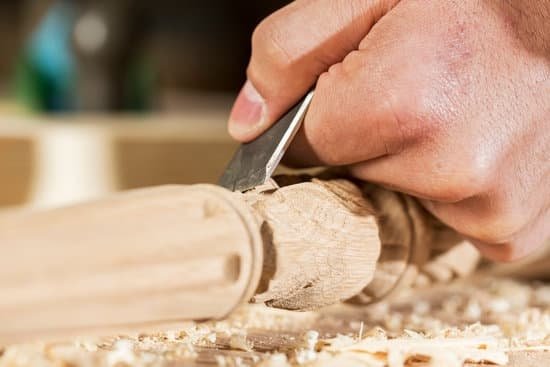Woodworking lathe is a crucial tool in the world of woodworking, allowing for the shaping and turning of various wooden pieces. Understanding what a woodworking lathe is, its history, and its significance in woodworking is essential for both beginners and experienced woodworkers. This article provides a comprehensive overview of woodworking lathes, including the different types available, how they work, essential woodturning tools, wood selection, techniques, projects, maintenance tips, and additional resources.
The introduction to woodworking lathes will explore their origins and evolution over time, shedding light on how this tool has played a pivotal role in shaping wooden objects. An understanding of the importance of woodworking lathes will provide insight into why they are an indispensable part of any woodworker’s toolkit.
Readers will gain valuable knowledge about the different types of lathes – from mini-lathes to full-size lathes – along with the advantages and disadvantages associated with each type. Additionally, this section will delve into the components and functions of a woodworking lathe and provide step-by-step guidance on how to use them for various projects.
By delving into this thoughtfully curated guide on woodworking lathes, readers can embark on an enriching journey that deepens their appreciation for woodturning while honing their skills in this timeless craft.
Types of Woodworking Lathes
Woodworking lathes come in various types, each with its own set of advantages and disadvantages. The mini-lathe is the smallest type, suitable for small-scale projects and hobbyists with limited space. It is portable and easy to use, making it ideal for beginners.
On the other hand, the midi-lathe is a step up from the mini-lathe in terms of size and power. It offers more versatility and is capable of handling larger projects while still being relatively compact.
The full-size lathe is the largest and most powerful type of woodworking lathe. It is designed for professional woodturners and those who work on large-scale projects. This type of lathe provides ample power and stability for turning hefty pieces of wood with precision. However, its main disadvantage lies in its size and weight, making it less convenient for those with limited space or mobility.
When choosing a woodworking lathe, it’s important to consider the specific needs of the user as well as the scale of the projects they intend to work on. Factors such as budget, available space, and level of expertise should also be taken into account when deciding which type of lathe is suitable.
Ultimately, understanding the differences between mini-lathes, midi-lathes, and full-size lathes will help users make an informed decision about which one best fits their woodworking needs.
Whether investing in a mini-lathe for small DIY projects or opting for a sturdy full-size lathe for professional woodturning endeavors, having a clear understanding of what is woodworking lathe will guide individuals in choosing the right equipment that aligns with their goals and capabilities in woodworking.
How Does a Woodworking Lathe Work
A woodworking lathe is a machine used to shape wood by rotating it rapidly along its axis while a cutter or other tool is applied to the surface. It is an essential tool for woodworkers as it allows them to create various cylindrical shapes, intricate designs, and decorative details on wooden pieces.
What is woodworking lathe? A woodworking lathe works by spinning a piece of wood at high speeds, allowing the user to carve and shape the material with precision and control.
Components and Functions
A typical woodworking lathe consists of several key components, including the headstock, tailstock, tool rest, bed, and motor. The headstock holds the spindle and allows for smooth rotation of the wood piece, while the tailstock provides support at the opposite end. The tool rest is used to support cutting tools during operation, ensuring accurate shaping of the wood.
The bed serves as the base of the lathe, providing stability and support for all other components. The motor powers the spindle, enabling rotation at variable speeds for different woodturning applications.
Step-by-Step Process
Using a woodworking lathe involves several steps starting with securing the wood piece between the headstock and tailstock using appropriate clamps or centers. Once secured in place, the lathe can be turned on to begin rotation.
Then, the user can select suitable turning tools based on their specific project requirements and start shaping or carving the wood while it spins. It’s important to make gradual adjustments in cutting depth and speed to achieve precise results and avoid any mishaps during operation.
Woodworking lathes are versatile machines that can be used for various applications such as creating table legs, decorative bowls, pens, candlesticks, and much more. Understanding how a woodworking lathe works opens up endless possibilities for creativity and craftsmanship in woodworking projects. Learning proper techniques and safety practices is crucial for anyone looking to master this tool effectively.
Essential Woodturning Tools
Woodturning on a woodworking lathe requires the use of specific tools to achieve smooth and precise results. Some essential woodturning tools include chisels, gouges, parting tools, skew chisels, scrapers, and specialized hollowing tools. Each of these tools serves a specific purpose in shaping and refining the wood as it spins on the lathe. Chisels and gouges are used for roughing out shapes and creating details, while scrapers are handy for smoothing and finishing cuts.
In addition to the cutting tools, woodturners also need to have a reliable chuck or drive center to hold the wood securely in place as it rotates. A lathe with adjustable speed settings is also crucial for achieving different cuts and finishes on various types of wood.
Safety gear such as face shields, goggles, and dust masks are essential for protecting the eyes and lungs from flying wood particles. Additionally, having a sturdy apron or workbench with tool storage is important for keeping the workspace organized and safe.
It is important to note that using sharp and well-maintained tools is crucial for achieving clean cuts and preventing accidents. Dull or damaged cutting edges can lead to splintering or kickback during turning operations. Therefore, regular sharpening and maintenance of woodturning tools is necessary to ensure the quality of workmanship and safety in the workshop.
Furthermore, understanding how to properly use each woodturning tool is vital for any woodworker operating a lathe. Mastery of techniques such as proper tool angles, hand placement, and cutting motions can significantly impact the final outcome of a turned wood piece. Aspiring woodturners should invest time in learning about each tool’s capabilities and practicing different cutting methods to enhance their skills in woodworking lathe operations.
Choosing the Right Wood for Woodturning
Woodturning on a woodworking lathe requires careful consideration of the type of wood being used for the project. The choice of wood can greatly impact the outcome of the turning, as different woods have varying characteristics and properties.
One key factor to consider when choosing wood for woodturning is the density and hardness of the wood. Softer woods like pine and cedar are more suitable for beginners as they are easier to work with, while harder woods such as oak and maple are better for more experienced turners.
Another important aspect to consider when selecting wood for woodturning is the grain pattern. The grain of the wood can add decorative elements to the turned piece, so it’s essential to choose a wood with an attractive and interesting grain pattern. Additionally, some woods may have more prominent figure or figuring, which can enhance the visual appeal of the final turned object.
It’s also crucial to take into account any potential health risks associated with certain types of wood. Some woods may produce dust or fumes that can be harmful if inhaled, so it’s essential to use proper respiratory protection when working with these woods. Overall, choosing the right type of wood for a woodturning project is a critical step in ensuring a successful and satisfying outcome.
| Wood Characteristics | Considerations |
|---|---|
| Density and Hardness | Different woods have varying levels of density and hardness, impacting ease of use |
| Grain Pattern | Grain patterns contribute to the overall appearance of turned objects. |
| Health Risks | Safety concerns related to specific types of woodworking lumber. |
Woodturning Techniques
Spindle Turning
Spindle turning is one of the basic woodturning techniques and involves creating long, slender turned objects such as table legs, chair spindles, and utensil handles. To perform spindle turning, the wood piece is mounted between the headstock and tailstock of the lathe. The tool is then used to shape and cut the spinning wood into the desired form.
Bowl Turning
Bowl turning involves shaping a solid block of wood into a concave form to create bowls, plates, and other similar items. This technique requires different tools and methods compared to spindle turning due to the hollowed-out nature of the finished product. Woodworkers need to pay close attention to grain direction and cutting angles when turning bowls on a lathe.
Hollow-Form Turning
Hollow-form turning goes beyond simple bowl turning by creating more complex hollowed vessels with thin walls and delicate shapes. This technique requires precision cutting tools and careful handling to achieve stunning results without compromising the structural integrity of the final piece.
By mastering these woodturning techniques, woodworkers can expand their creative repertoire and produce an array of functional and decorative items using a woodworking lathe. With patience, practice, and dedication, individuals can unlock their potential as skilled craftsmen in this unique art form.
Common Woodworking Lathe Projects
Woodworking lathes are versatile tools that can be used to create a wide variety of projects, making them popular among woodworkers of all skill levels. From small decorative items to furniture and kitchenware, the possibilities are virtually endless with a woodworking lathe. One of the most common woodworking lathe projects is the creation of wooden bowls. With the right technique and tools, it is possible to turn a piece of raw wood into a functional and aesthetically pleasing bowl.
Another popular project for woodworking lathes is the production of wooden pens and pencils. Turning wooden writing instruments on a lathe allows woodworkers to showcase their craftsmanship in small, intricate designs. Additionally, the process provides an opportunity to experiment with different types of wood to achieve unique patterns and finishes. Wooden pens and pencils make great gifts and are always in high demand at craft fairs and markets.
One more common woodworking lathe project is the turning of table legs and chair spindles. These components are integral parts of furniture making, and using a lathe allows for precise shaping and detailing that may not be achievable with other tools. Whether it’s creating traditional round legs or more elaborate designs with fluting and coves, a woodworking lathe offers woodworkers the flexibility to bring their furniture ideas to life.
| Common Woodworking Lathe Projects | Description |
|---|---|
| Wooden Bowls | A common project that demonstrates the capabilities of a woodworking lathe. |
| Wooden Pens and Pencils | An intricate project allowing for creativity with different types of wood. |
| Table Legs & Chair Spindles | An essential part of furniture making that requires precision shaping. |
Maintenance and Care of Woodworking Lathe
A woodworking lathe is a crucial tool in the craft of woodturning, allowing artisans to create beautifully crafted items such as bowls, spindles, and other decorative pieces. To ensure that your woodworking lathe continues to function effectively and produce high-quality work, proper maintenance and care are essential. Here are some tips for keeping your woodworking lathe in good condition:
- Regular Cleaning: It’s important to regularly clean the lathe after each use to remove sawdust, shavings, and other debris. Dust and dirt can build up on the moving parts of the lathe, potentially causing damage over time.
- Lubrication: Proper lubrication of the moving components is crucial to prevent wear and tear. Be sure to use the appropriate lubricants recommended by the manufacturer to keep everything running smoothly.
- Checking for Wear: Periodically inspect the belts, bearings, and other parts for signs of wear or damage. Replace any worn-out or damaged components promptly to avoid further issues.
In addition to regular maintenance tasks, there are certain measures you can take to extend the lifespan of your woodworking lathe:
- Proper Storage: When not in use, store your lathe in a clean, dry area away from extreme temperatures and humidity. This will help prevent rust and corrosion on metal parts.
- Use with Care: Always operate the lathe according to the manufacturer’s instructions and guidelines. Avoid putting excessive strain on the machine or using inappropriate tools that could cause damage.
- Scheduled Servicing: Consider scheduling routine servicing by a professional if you use your lathe frequently. This can help catch any potential issues early and keep your machine running smoothly.
By following these tips for maintenance and care, you can ensure that your woodworking lathe remains in top working condition for years to come, allowing you to continue creating beautiful woodturned projects with precision and ease.
Conclusion
Woodworking lathes are an essential tool for any woodworker, allowing them to create a wide variety of projects with precision and efficiency. The history of woodworking lathes dates back thousands of years, with the modern lathe evolving from its ancient predecessors into a highly specialized piece of equipment. Whether it’s turning furniture legs, crafting decorative bowls, or creating intricate designs, the woodworking lathe is a versatile tool that has stood the test of time.
When it comes to types of woodworking lathes, there are several options to choose from. From mini-lathes suitable for smaller projects to full-size lathes capable of handling large-scale workpieces, each type has its own advantages and disadvantages. For those with limited space or working on smaller projects, a mini-lathe may be the best option, while professional woodworkers may prefer the capabilities of a full-size lathe.
In order to effectively use a woodworking lathe, it’s important to have the right tools and equipment. Essential woodturning tools include gouges, chisels, and parting tools, each serving a specific purpose in shaping and finishing wood on the lathe. Safety gear such as goggles, dust masks, and ear protection are also crucial when working with a lathe to ensure personal safety and prevent accidents.
Maintaining and caring for a woodworking lathe is key to its longevity and performance. Regular cleaning, lubrication of moving parts, and adjustments will keep the lathe running smoothly for years to come.
Overall, the woodworking lathe is an invaluable tool in any woodworker’s arsenal. Its versatility and ability to create intricate designs make it an essential component for both beginners and experienced craftsmen alike. With proper care and maintenance – as well as dedication to learning various woodturning techniques – woodworkers can unleash their creativity and produce stunning pieces using this remarkable tool.
Additional Resources
In conclusion, it is evident that woodworking lathes play a crucial role in the world of woodworking. From their historical significance to the modern-day evolution, these tools have become essential for creating a wide array of woodturned projects. Understanding the types of lathes available, how they work, and the various woodturning techniques can open up a world of creativity and craftsmanship for both beginners and experienced woodworkers.
For those who are just starting out with woodturning, it’s important to familiarize yourself with the essential tools needed for the lathe and to prioritize safety when working with this equipment. Additionally, choosing the right type of wood for your projects and mastering different turning techniques can greatly impact the outcome of your work.
As you embark on your journey with woodworking lathes, remember that maintenance and care also play a significant role in ensuring the longevity of your lathe. By following proper maintenance routines, you can extend the lifespan of your equipment and continue to create beautiful woodturned pieces for years to come.
To further delve into the world of woodworking lathes and expand your knowledge on this topic, we recommend exploring additional resources such as websites, books, or videos dedicated to woodworking lathes. There is always more to learn when it comes to this craft, and these resources can provide valuable insights and inspiration for your future projects. So what is woodworking lathe? It’s an indispensable tool that opens up endless possibilities for creativity in woodworking.

Hi everyone! I’m a woodworker and blogger, and this is my woodworking blog. In my blog, I share tips and tricks for woodworkers of all skill levels, as well as project ideas that you can try yourself.





